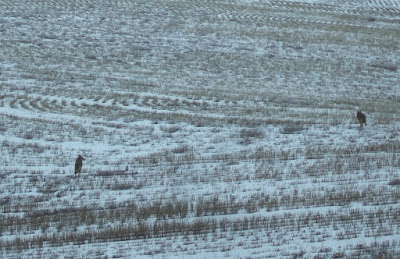Ritzville is a well preserved small city in eastern Washington. Much of the downtown area is within the National Register of Historic Places. The city is located where I-90 joins U.S. Highway 395, or if viewed in another way, where the two roads part. State Highway 261 also starts or ends at Ritzville.
Geologically the town is located at the upper end of Paha Coulee. This coulee was scoured a bit by ice age flood waters that branched off of the Cheney-Palouse flood path just to the east of Ritzville. The reliable History Link provides a good overview of the town and its history
http://www.historylink.org/File/9396.
The highways now skirts around the town just to the southeast, with a truck stop, several gas stations and motels, and quick eats at the service exit. It is a short drive into the town itself and there are a couple of older motels in the main town area. The population has declined some in the past few decades from a high of 2,173 in 1960 to 1,673 as of 2010. However, the town has some advantages have kept it reasonably intact relative to some of the other dry land communities in eastern Washington.
The town has a movie theater that is still open and showing first run films
Note also there is bank on the ground floor next door
The first pioneers in the area ran cattle on the open range, but they were soon replaced by dry land wheat framers. A substantial number of the wheat farmers were German immigrants that had previously been in Russia. Wheat is the big business of the area and Ritzville is a major shipper of wheat with a main rail line running through town. Note in the image above the crane as work was taking place at the elevators on this cold day.
The heart of downtown on a cold winter day
The cars show that people were at work
The downtown is on the National Register of Historic Places
There are recreational opportunities
Big Bend refers to the big bend in the somewhat distant Columbia River which flows to the west before turning south at the Big Bend
The wheat land to the north and west is locally called the Big Bend
A bit of wealth from Pittsburg came to Ritzville in 1907
One of many brick buildings in the historic district of downtown
Ritzville exists where it does due to the railroad that follows the even grade down Paha Coulee
The town has lots of train traffic passing through, but the rail is also a critical component fro shipping wheat from the region.
Ritzville is the County seat of the small population county
Wide double lane street heading up into a neighborhood
Downtown buildings with some fanciness
For its size and setting having a drugstore is a big deal
This establishment was closed and vacant
On this frigid day the name had some appeal
Reasonable expectations at the downtown grocery
I missed out on Pastime, but good to know there is a tavern and sports on TV
The old railroad station has been well preserved
Although it was cold I really enjoyed this farm implement display next to the railroad station
Each implement had a sign explaining what it was and its use.
Solved few mysteries for me
Across from the farm implements was a vacant building of bygone days.
Small car dealerships are a thing of the past
A measure of the town prosperity is that there are open banks serving the community
The bank building has been in use as a bank under various owners for over 100 years
Most of the downtown buildings had historical signage
A final note should be that Ritzville is typically note so snowy. This winter has been rather exceptional with lots of snow in the dry land areas of eastern Washington.
I have added a new label to the blog side bar: towns and cities. I have done short write ups with pictures of towns before or some aspect of a city but did not have a specific label.

























































